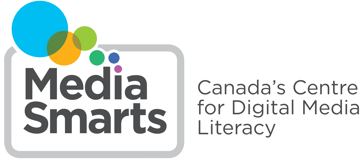The Break the Fake: How to tell what's true online workshop will teach audiences four quick, easy steps they can take to spot misinformation and find out if something online is true or not. The workshop includes methods for recognizing AI-generated misinformation, including deepfakes, as well as tips on how to use AI for verifying information.
In this lesson, students participate in a workshop that teaches them four quick, easy steps to verify online information. After practicing these four steps they create a public service announcement aimed at teaching one of these steps and spreading the message that it is necessary for everyone to fact-check information we see online every time we are going to share it or act on it.
Because it’s so easy to copy and share things online, it’s important to find out where something originally came from before you decide whether or not to trust it. Someone might have shared it with you on social media, or a news story might be based on someone else’s story.
My daughter – age 14 – is all about Instagram. It’s her primary source of entertainment: if she’s on her phone, she’s likely looking at memes or laughing at silly posts made by her friends. It’s also the main way she communicates with them, as they use its messaging service much more than things like texting or video chat.
In its early days, the internet was often spoken of as a free marketplace of ideas, where everyone’s views and thoughts could be shared and compete on an equal footing. Today it’s an essential tool for accessing information and services, but its value as a vehicle of civic engagement and debate has in many ways declined.
In the educational game 'A Day in the Life of the Jos', students in grades six to eight help the brother and sister team Jo and Josie with situations they encounter online as they go about a typical day in their lives.
A Day in the Life of the Jos is a comprehensive digital citizenship tutorial that prepares students in grades six to eight to deal with all of the issues they face when using digital technology – from online privacy, to cyberbullying, to recognizing what’s real and what’s fake online.
In this lesson, students consider the meanings of the term “fake news” and learn facts about the news industry that will help them recognize legitimate sources of news. They use an educational computer game to learn how to track a news story to its original source before evaluating its reliability, then practice the same skills “in the wild” with actual news stories.
In this lesson, students consider the ways in which our own biases can prevent us from being objective. They then learn ways to recognize and account for our biases and practice these by playing an interactive online game. Finally, students learn about how public service campaigns can change social norms and create their own PSA to promote ethical sharing of online information.
Level: Grades 9 to 12
About the Author: Matthew Johnson, Director of Education, MediaSmarts
Duration: 1 ½ to 2 hours, plus time for the assessment/evaluation activity
